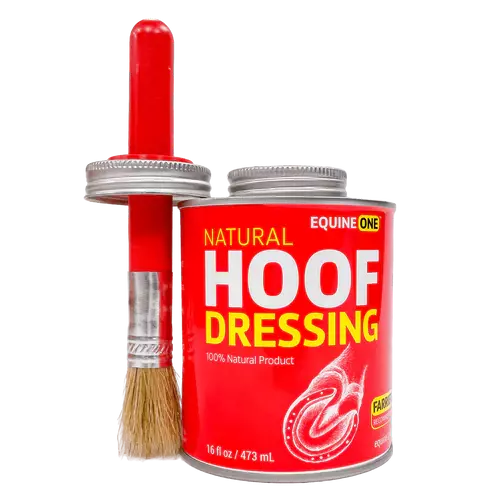Note: This is sponsored content.
Strong hooves are the foundation of a healthy horse. Without solid feet, a horse can’t live a comfortable life in the performance arena or in the pasture. There are many reasons horses have weak hooves. It could be bad genetics, a congenital issue, nutritional imbalance or unsanitary living conditions.
A proactive approach is always healthier for the horse to avoid immediate pain and long-term layups. Prevention begins with a good diet. Feeding high quality forage and grain, along with supplements recommended by a veterinarian or farrier ensures the horse is getting the proper nutrients. Maintaining a regular trimming or shoeing schedule is also critical, as is providing as clean a living environment as possible.
Following these practices isn’t always enough to protect a horse’s hooves from developing minor conditions such as thrush, cracks, bruises or abscesses. In severe cases white line disease or laminitis can develop in some horses. The most common issues (abscesses, cracks and thrush) create opportunities for bacteria and fungi to invade the hoof wall and create an infection.
When bacteria works its way into the hoof pus develops creating an abscess. This results in pressure and pain that presents as lameness. Hoof cracks can be equally painful. All cracks (quarter, toe and hoof wall cracks) make hooves susceptible to bacteria that can invade the soft tissues and potentially cause an abscess. Making sure the area is free from bacteria and proper trimming supports the hoof and encourages growth.
Sometimes, even with the best care, bacteria can work its way into the hoof and cause problems. Immediate farrier and veterinary attention can quickly resolve most issues, but the key is to prevent these conditions from developing.
Equine One offers a topical, all-in-one added layer of protection when painted onto a horse’s hooves. The all-natural formulation acts as a sealant. By coating minor nail holes and surface cracks, the bacteria and fungus that cause thrush, cankers, abscesses and white line disease, are blocked from entering the hoof wall. It also helps the hoof maintain an optimal moisture level by supporting the hoof’s natural process of replacing its outer layers of keratin, making hooves strong.
Birch bark extract is one of the main active ingredients found in Equine One. Birch bark has been used for centuries in both human and veterinarian medicine because of its antimicrobial and anti-inflammatory qualities. The main component of Birch Bark is called betulin. That’s what gives birch the characteristic white color. Research studies conducted in human medicine have provided evidence that betulin has naturally occurring pain relieving qualities, which provide relief to horses suffering from a variety of hoof ailments.
*Certified omega-3 oil, Vitamins A and D, which are found in fish oil, are also key ingredients in the Equine One topical.* Together, these components promote tissue repair and encourage the growth of healthy hooves. You can use Equine One with confidence. The formulation follows FEI regulations and does not include prohibited substances identified on the FEI 2023 Equine Prohibited Substance List.
Equine One is sold as Hoof Doctor outside of the United States.








Post a comment
Report Abusive Comment